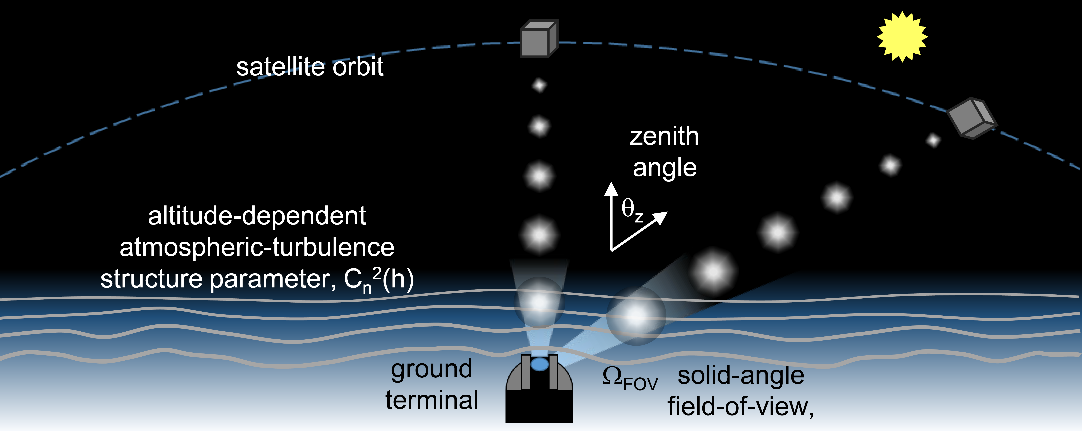QUANTUM NETWORKING WITH ENTANGLED PHOTONS
WHO WE ARE
The Directed Energy Directorate (RD) at Kirtland AFB, Albuquerque, New Mexico is home to AFRL’s Freespace Atmospheric Links for Quantum Optical Networks (FALQON) team. This research program integrates expertise in quantum optics and adaptive optics to enable satellite-based daytime space-Earth quantum communication and networking. FALQON is one piece of the larger AFRL effort to build a large-scale quantum network.

WHAT WE DO
Through a series of field experiments, FALQON validated its technique for solving the daytime space-Earth downlink quantum problem. In doing so, FALQON was the first to successfully integrate and demonstrate the benefit of adaptive optics in a daytime freespace quantum networking experiment. Furthermore, FALQON was the first to carefully monitor and tune the channel conditions to be representative of a slant-path space-Earth link. FALQON currently works on photon sources and applications of quantum networking in its testbed and is transitioning technology to a ground terminal for space-Earth experiments planned for 2024-2027.

CONTACT
POSTDOC OPPORTUNITY
SELECTED PUBLICATIONS
- 2023 – Quantum Time Transfer: A Practical Method for Lossy and Noisy Channels
- 2022 – Optimal Polarization-Entanglement Source: Frequency-Converted SPDC
- 2021 – Quantum Communication over Atmospheric Channelse: A Framework for Optimizing Wavelength
- 2021 – Adaptive-Optics-Enabled Quantum Communication: A Technique for Daytime Space-To-Earth Links
- 2017 – Modeling satellite-Earth quantum channel downlinks with adaptive-optics coupling to single-mode fibers
- 2016 – Adaptive spatial filtering of daytime sky noise in a satellite quantum key distribution downlink receiver
- 2015 – Modeling daytime sky access for a satellite quantum key distribution downlink
- 2014 – Adaptive spatial filtering for daytime satellite quantum key distribution
